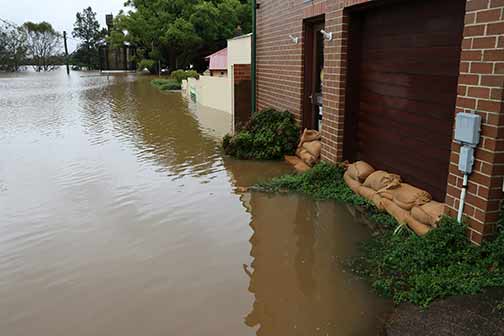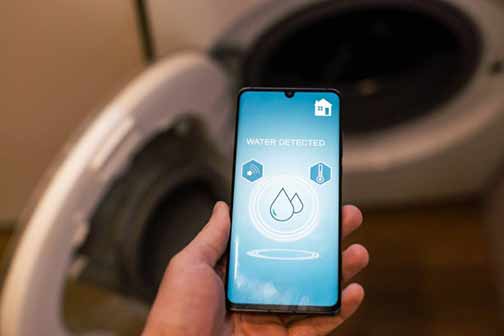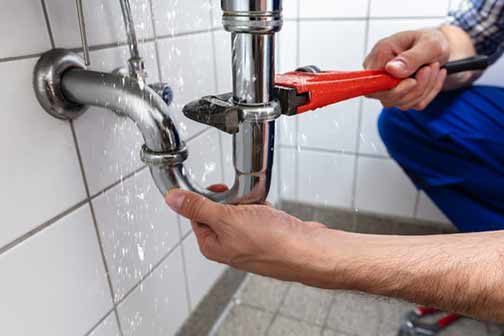
Plumbing floods can occur unexpectedly, causing significant damage to both homes and businesses. Understanding the risks involved is the first step in preventing such disasters. Plumbing systems, while essential, can become a source of concern if not properly maintained. From burst pipes to clogged drains, various factors can lead to flooding. Recognizing these risks allows property owners to take proactive measures to safeguard their investments.
Plumbing systems are often hidden behind walls and under floors, making it easy to overlook potential problems. Over time, wear and tear can compromise the integrity of pipes and fixtures. Environmental factors such as freezing temperatures can also cause pipes to burst. Additionally, improper installation or use of substandard materials can increase the likelihood of plumbing failures. Understanding these risks is crucial in developing an effective prevention strategy.
Regular Maintenance: The Key to Prevention and Long-term Safety
Regular maintenance is crucial in preventing plumbing floods. Scheduling routine inspections with a nearby plumber can help identify potential issues before they escalate. This includes checking for leaks, inspecting pipe joints, and ensuring that all components of the plumbing system are functioning correctly. By investing in regular maintenance, property owners can avoid costly repairs and the inconvenience of dealing with water damage.
Routine maintenance should also include cleaning and inspecting drains and gutters to prevent blockages. A small clog can quickly escalate into a major problem if not addressed promptly. Regularly testing water pressure and ensuring that shut-off valves are in good working order can also help prevent emergencies. By taking these steps, property owners can ensure their plumbing systems remain in optimal condition, reducing the risk of floods.
Installing Water Detection Devices: An Early Warning System
Water detection devices are an invaluable tool in flood prevention. These devices can be installed in areas prone to leaks, such as basements, bathrooms, and kitchens. They alert property owners to the presence of water, allowing for swift action to prevent extensive damage. Modern water detection systems can even send alerts to smartphones, providing peace of mind even when away from the property.
Installing water detection devices is a proactive step that can save property owners from significant damage and expense. These devices are designed to detect even small amounts of moisture, providing an early warning that can prevent a minor issue from becoming a major disaster. By integrating these systems with smart home technology, property owners can receive real-time alerts and take immediate action, no matter where they are.

Understanding Insurance Coverage for Flood Damage: Protecting Your Assets
Insurance can provide a financial safety net in the event of a plumbing flood. However, it’s essential to understand what is covered under your policy. Many standard homeowner’s insurance policies do not cover flood damage, requiring additional coverage. Reviewing your insurance policy and discussing options with your insurance provider can ensure you have adequate protection against potential flood-related losses.
Understanding the nuances of insurance coverage is critical in protecting your property. Many policies cover sudden and accidental water damage but exclude damage from long-term leaks or poor maintenance. It’s important to read the fine print and ask questions to clarify any uncertainties. Additionally, considering additional flood insurance can provide peace of mind and financial protection in the event of a major flood.
Emergency Preparedness: Planning for the Unexpected with Confidence
Being prepared for an emergency can significantly reduce the impact of a plumbing flood. Property owners should develop a comprehensive emergency plan that includes shutting off the main water supply, knowing how to contact a plumber quickly, and having essential tools on hand. Practicing this plan with family members or employees ensures everyone knows what to do in the event of a flood.
An effective emergency plan should also include a list of emergency contacts, such as plumbers and insurance providers, and a detailed inventory of valuable items. Regularly reviewing and updating this plan can ensure that it remains relevant and effective. By preparing for the unexpected, property owners can minimize the impact of a flood and protect their investments.
Proper Drainage Systems: An Essential Component of Flood Prevention
Effective drainage systems are critical in preventing plumbing floods. Ensuring that gutters, downspouts, and drainage pipes are clear of debris can prevent water from accumulating around the foundation of a building. Additionally, installing sump pumps in basements can help manage excess water and prevent flooding. Regularly checking and maintaining these systems is essential in keeping properties safe from water damage.
Proper drainage systems can prevent water from pooling around the foundation of a building, reducing the risk of structural damage. Regularly cleaning gutters and downspouts can prevent blockages that can lead to flooding. Installing and maintaining sump pumps can provide an additional layer of protection, ensuring that excess water is effectively managed and directed away from the property.

Addressing Plumbing Issues Promptly: Avoiding Catastrophic Consequences
Delaying repairs on plumbing issues can lead to catastrophic consequences. Even minor leaks can escalate into significant problems if not addressed promptly. Property owners should prioritize fixing leaks, replacing worn-out pipes, and addressing any signs of moisture or water damage immediately. Quick action can prevent small issues from becoming costly disasters.
Addressing plumbing issues promptly can prevent minor problems from escalating into major disasters. Property owners should be vigilant in identifying and addressing leaks, clogs, and other plumbing issues. Regular inspections and maintenance can help identify potential problems before they become serious. By taking prompt action, property owners can protect their investments and avoid costly repairs.
Educating Occupants on Flood Prevention: Empowering Everyone
Educating the occupants of a property about flood prevention can further enhance safety measures. Providing information on how to identify potential plumbing issues, the importance of reporting leaks, and steps to take in an emergency can empower everyone to contribute to flood prevention. Encouraging a proactive approach among occupants can make a significant difference in maintaining a safe environment.
Educating occupants about flood prevention can create a culture of safety and vigilance. By providing information on how to identify potential plumbing issues and the importance of reporting leaks, property owners can empower everyone to contribute to flood prevention. Regular training and communication can ensure that everyone understands their role in maintaining a safe environment.
Leveraging Technology for Flood Prevention: Innovative Solutions
Advancements in technology offer new solutions for flood prevention. Smart home systems can integrate with plumbing to monitor water usage and detect anomalies that may indicate a leak. Automated shut-off valves can stop water flow in the event of a detected leak, minimizing damage. Embracing these technological innovations can provide an additional layer of protection against plumbing floods.
Leveraging technology for flood prevention can provide innovative solutions that enhance safety and protection. Smart home systems can monitor water usage and detect anomalies that may indicate a leak. Automated shut-off valves can stop water flow in the event of a detected leak, minimizing damage. By embracing these technological innovations, property owners can enhance their flood prevention strategies and protect their investments.
The Emotional Impact of Plumbing Floods: Supporting Recovery
Beyond the physical damage, plumbing floods can have a significant emotional impact on property owners. The stress of dealing with repairs and the potential loss of valuable possessions can be overwhelming. Providing emotional support to those affected is crucial. Offering reassurance, practical advice, and resources can help individuals navigate the recovery process and restore a sense of normalcy.
The emotional impact of plumbing floods can be significant, affecting property owners and their families. The stress of dealing with repairs and the potential loss of valuable possessions can be overwhelming. Providing emotional support to those affected is crucial. Offering reassurance, practical advice, and resources can help individuals navigate the recovery process and restore a sense of normalcy.
To Conclude
Protecting your property from plumbing floods requires a holistic approach that combines regular maintenance, technological solutions, and emergency preparedness. By taking proactive measures and educating occupants, property owners can minimize the risk of floods and their associated impacts. Emphasizing both professional guidance and emotional support ensures a comprehensive strategy to safeguard homes and businesses from the devastating effects of plumbing floods.
A holistic approach to flood prevention can protect property owners from the devastating effects of plumbing floods. By combining regular maintenance, technological solutions, and emergency preparedness, property owners can minimize the risk of floods and their associated impacts. Emphasizing both professional guidance and emotional support ensures a comprehensive strategy to safeguard homes and businesses.

